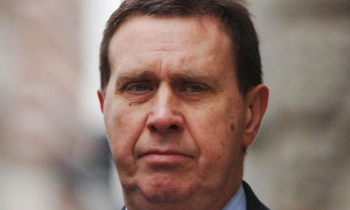This spring, when much of the national news media had become all Elián, all the time, their audience was very familiar. Fully 61 percent of the core audience for the Elián González story were the same dedicated viewers, readers, and listeners who followed news of the plane crash last July that killed John F. Kennedy Jr. The links don't stop there. No less than 73 percent of those drawn to news about Kennedy's tragic death had been close observers of news about the untimely death of another, even more famous member of the glitterati, Princess Diana.
The core audiences for each of these stories had previously made up a large majority of the those following the O.J. Simpson murder case. And large percentages of each had also closely followed the ins and outs of the only White House scandal to ever improve a president's approval rating. Elián González is a bit of an anomaly here, but when the national spotlight is turned on children in trouble, they quickly become celebrities.
The Pew Research Center's monthly news interest surveys have found that the seemingly disparate accounts of deaths of the rich and famous, a custody battle over a six-year- old boy, a murder trial of a football legend, and a lurid tale of sex in the Oval Office can attract a large common news audience.
A recent national poll found 33 percent of news consumers saying they had followed three or more of these stories very closely. These celebrity tragedy fans can make the ratings move from a 2 to a 4 on cable news shows, or add 300,000 to newsstand magazine sales.
Celebrity tragedy fans are distinguished by two characteristics -- they follow news about most things more than the average, but they also are people with decidedly tabloid tastes.
They are much more likely than the average person to watch America's Most Wanted and to read People and the National Enquirer. But they are also heavy users of harder news media.
Demographically, the celebrity tragedy audience contains a disproportionate number of females and less-educated people, compared to general audiences. More people over thirty and members of minority groups also turn up in this category than do younger people and whites. This group also holds generally positive attitudes toward the news. Unlike many Americans, they enjoy keeping up with the news a great deal and are very satisfied with the available choice of TV news programs. Most say they follow national news even when "not much is happening."
The problem with all of this is that a significant portion of the general news audience believes that these celebrity tragedies are over-covered, according to a number of Pew surveys conducted during these media frenzies. News organizations should be particularly concerned with the reactions of the many loyal news consumers who don't wallow in the celebrity tragedies. The Pew survey identified a bloc comprising about 25 percent of the public who are dutiful news consumers, but are not turned on by national melodramas.
This more serious segment of the audience is better educated, and is generally much less content with the news media's offerings than those fixated on celebrity tragedies. Just 37 percent of the serious news consumers are very satisfied with TV news, compared to 59 percent of the celebrity tragedy fans.
When news organizations go all Elián, all the time, they risk their hold on the serious news audience. And these are the kind of people who have shown a willingness to defect from TV news to the Internet, where they can filter out the latest news on Diana or O.J.
Cable chat shows, which attract a high percentage of news junkies, and pure tabloid media have little to lose by gearing coverage to the celebrity tragedy audience. But that approach is more problematic for news organizations that are also attempting to appeal to more serious consumers. Newspaper editors and nightly news producers might well come away with a hangover if they overdo it on the next Elián or O.J.
Andrew Kohut, director of the Pew Research Center for The People & The Press, is a regular CJR columnist, writing about public attitudes toward the media. In 1989 he founded Princeton Survey Research Associates, an attitude and opinion research firm specializing in media, politics, and public policy studies.









